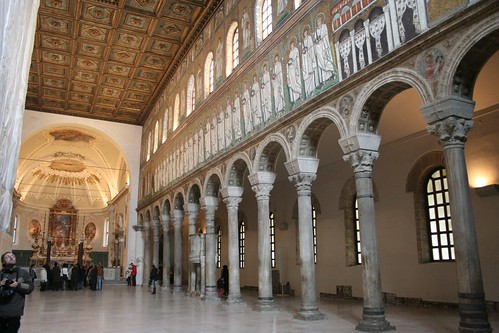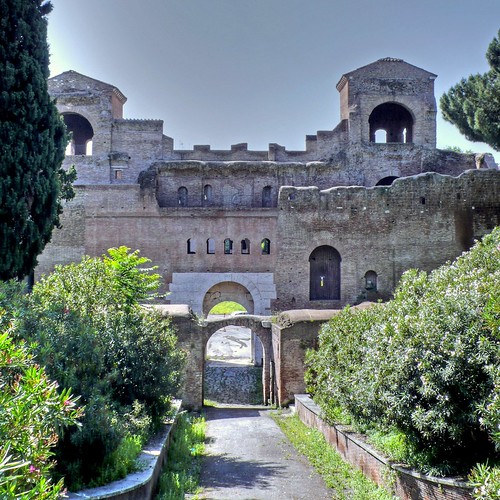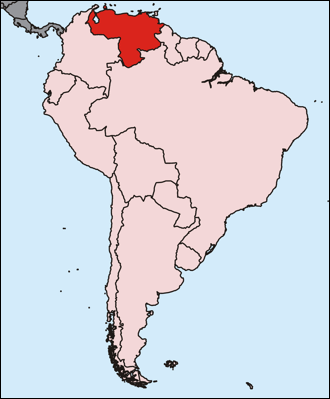 There had been a webpage on the PAL website entitled "Save Italy Movement USA." This was in response to the flood of millions of immigrants from 152 countries around the world, mainly the third world, into Italy. In 2007, there were about 300,000 into the small country. I had intended on taking many news links from, or about, Italy, and showing how extreme this situation really is. Also, there is staggering photo evidence of it as well. I think that this in tragic, and will eventually mark a permanent end to Italian culture. People talk about visiting the Veneto and that all they see is Africans, Pakistanis, etc. Brescia, overnight, has become the home to a large "Little Senegal."
There had been a webpage on the PAL website entitled "Save Italy Movement USA." This was in response to the flood of millions of immigrants from 152 countries around the world, mainly the third world, into Italy. In 2007, there were about 300,000 into the small country. I had intended on taking many news links from, or about, Italy, and showing how extreme this situation really is. Also, there is staggering photo evidence of it as well. I think that this in tragic, and will eventually mark a permanent end to Italian culture. People talk about visiting the Veneto and that all they see is Africans, Pakistanis, etc. Brescia, overnight, has become the home to a large "Little Senegal."The average Italian woman has 1.2 children. Amazing, when we look back on the centuries of large Italian families. It takes 2.1 children to just stay even in population. The Muslim population is expanding at the fastest rate, and throughout all of Europe, and they have large families. The news from Europe and Italy is ripe with new Muslim organizations "making demands." Demands in a country and culture which is NOT theirs. They even openly talk about how they will take over. The population of the North African states, in particular, are exploding in population, with no economy to support it.
Italy's population is older, and the way financial and economic interests view it is that they need "new tax payers" to line their pockets, above all else. They use the excuse that someone needs to pay for the aging population as they retire, which wasn't a problem in the first 6,000 years of civilization. This ties into so many issues: Globalization, the European Union, the right to national sovereignty, the Vatican, individual cultures, Western Civilization itself, and so many others. To digress, the "Save Italy Movement USA" was to be a coalition of Americans to oppose this, in whatever activist form it might take. At the very least, any representatives from the Italian government should be made to not feel welcome anymore.
When the late Oriana Fallaci dared to criticize the mass Muslim migration into Europe and Italy, it caused quite a stir. I always wondered how "survival" could be radical. This goes far beyond "left and right" politics. Fallaci was a Leftist. The "Italian Muslim Council" screamed to high heaven, a court in France indicted her; don't ask me to explain how this can happen. It's the result of nations who lose both their culture and sovereignty. Even the Northern League has abandoned their quest for in independent Padania; having to focus all their attention to this issue.
When immigrants from Europe migrated to America, they always just assumed that the "old country" would always be there for them. Either to return, or as a symbol of their particular culture. That this culture would always endure, as they became part of what was a "Euro-American melting pot." Up until very recently, this was still an accepted fact and assumption. Also, only Western countries are to become "multicultural." Even the base cultures! (European)
What amazes me is how countries like Germany or Italy, the average citizen, could accept joining up with what they could clearly and plainly see was the result of this program in France and England. Surely some of them must have visited Paris or London. Also with the EU open borders, the poor areas of Europe invade the wealthier areas. Why should Germans pay because they have been the most successful people in Europe recently? Why can't the poor regions take it as a challenge, and national pride, to become more successful instead of latching themselves onto Germany's ankles (or whatever rich area) ? Germans have the right to their own culture, just like everyone else.
Also, why should the average working person in a wealthier country, pay for the road conditions of the poor countries? The EU was a power grab by bankers, which have war mongered and leeched off of Europeans for centuries. Thankfully, that same type of power grab was stopped, at least temporarily, in the USA (North American Union). While the average German citizen is a victim, the German government is more tyrannical than it's ever been! They attack free speech at every turn, and are chomping at the bit to send their police to other countries because they want to arrest "free speech abusers" there.
As stated earlier, this issue knows no bounds. We see the World Bank demanding that Russia start accepting massive numbers of third world immigrants. We see American General Wesley Clark demanding that European cultures be eliminated. We see a president of the World Jewish Congress demanding that Australia become "multicultural," while at the same time insisting that Israel become "Jewish Only." What is really going on here? It's called Globalization, and it operates just like cancer does.



















